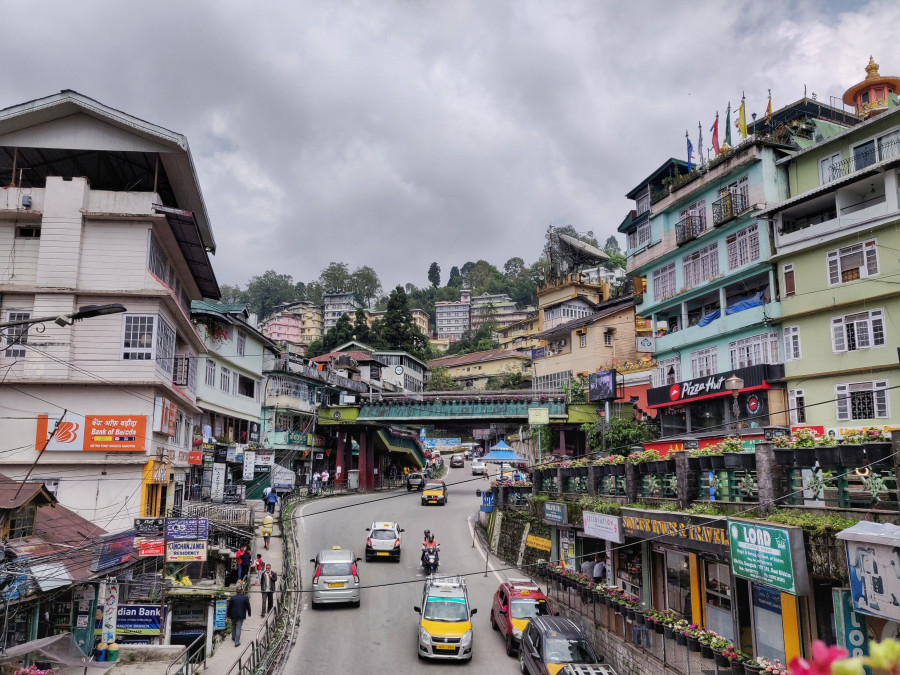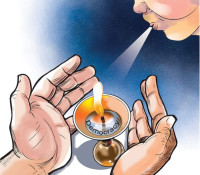Columns
Nepalis in the land of the Teesta
The Nepali diaspora has long shown it does not need a state to claim its identity.
Amish Raj Mulmi
If you studied Nepali, as I did, under the Indian Certificate of Secondary Education (ICSE) board in India, chances are high you’d have studied the novel Bhramar ("Bumblebee") by Roop Narayan Singh. First published in 1936, the novel is among the earliest modern novels in Nepali. As Singh writes in the foreword, he got the urge to write a "social novel" ("samajik upanyas") while studying law at Calcutta University. Born in Kurseong in 1904, Singh’s literary legacy has been assured because thousands study the text every year for their tenth grade exams.
Bhramar, in my recollection, is the first novel about the Nepali diaspora. It inhabits a world where Nepalis have settled in India–Darjeeling, Kurseong, Kalimpong, Varanasi–and Myanmar (then Burma) for several generations. The lives of its protagonists flow along with the Teesta and Hooghly rivers, and rise and fall as the eddies and tides do. In retrospect, Bhramar’s world is a man’s world. The "bee" of the title, Indra Shekhar, is an educated young Nepali who dumps Maya after she proposes marriage. When he finally realises love after meeting Veena, he apologises to Maya, but the latter rejects his apology. Shekhar travels to Burma in penance, where he meets the Nepali merchant "Mota" Rai and his family, including Gauri, whom he forcibly kisses one day. Filled with guilt, he casts himself ashore once more and returns to Kolkata, where he dedicates his life to social service among the Nepali labour class.
Be that as it may, Bhramar is also full of ironies. The women are equally educated, if not more, than the men, yet dedicate their lives to the men. Caste is rejected as a feudal remnant of old Nepal, one its characters have tried to escape. Education is valued as essential to make it in this new world. Yet, in trying to recreate a Nepali identity in the diaspora, it borrows from the very scriptures and ideals it rails against. Nonetheless, it stands out because of its attempt at modernism, especially more so because it is located in a period when the Nepali diaspora was finding its feet in the British Empire.
'Muglan' and the Nepali
The story of Nepali migration to regions east of the Mechi is one that has largely been told through literature, songs and oral histories so far. But as historian Alex McKay puts it, a study of the "formation in exile of a Nepalese identity from an ethnically diverse population…await[s] future studies". For example, Sikkim’s demography changed completely in just over a hundred years to be dominated by Nepali migrants who had been encouraged by British imperialists and Sikkimese landowners to settle in the country. A Sikkimese royalist like Sunanda Datta-Ray, whose book titled Smash and Grab: Annexation of Sikkim suggests his perspective, calls Nepali immigrants "Britain’s debilitating legacy".
A new Nepali identity was shaped in the Teesta watershed through the works of "SuDhaPa"–litterateurs Surya Bikram Gyawali, Dharanidhar Koirala and Paras Mani Pradhan. Whether imagining a "bir Gorkhali" identity that coalesced diverse groups of Nepali together in a foreign land, or as a reaction to Rana autocracy which eventually played midwife to Panchayati nationalism here in Nepal, the idea that the Nepali language was essential to create a unified "historical narrative for their own self-identity as a community", as historian Pratyoush Onta has documented, owes its genesis to the triumvirate. Thus, we see a Bhanubhakta Chowk in Kalimpong, and a Bhanu Path and Park in Gangtok, odes to a poet we here in Nepal mostly remember one day of the year.
But identities are never constant. Much like the Teesta’s waters, identities are always in a state of flux, and sometimes require new landscapes of imaginations. They can be self-declared, or imposed upon by others. And sometimes, new fractures appear. As unusual as it felt to be addressed as a "Nepali from Nepal" in Gangtok a few weeks ago, it was even more illuminating to hear of the imagined frontiers between the Nepalis who live on the West Bengal side of the Teesta (and who like to address themselves as "Gorkhalis" now, post the highs and lows of the Gorkhaland movement) and those who live in Sikkim as "Sikkim subjects" that allows them to avail of the many benefits New Delhi has conferred upon the state post 1975.
Perhaps the most laconic way of describing this divide was the imagination of marital ties, as it was put to me. In the past, Nepalis from Darjeeling and Kalimpong saw Sikkim as a remote outpost and refused to wed their daughters in the state. Now, with Sikkim replete with funds from Delhi and more opportunities than the over-populated, over-politicised and under-developed West Bengal hills, Sikkimese Nepalis no longer prefer to wed their girls to the once-legendary hill stations.
The view from Kathmandu
In Kathmandu, however, the Nepalis of the Teesta are seen from different lenses. The first is to incorporate them within the larger Nepali nation, or as some of our nationalists like to imagine, part of the "Greater Nepal" state. Thus we have hordes of Nepalis who vote for Prashant Tamang to win Indian Idol or support the Gorkhaland movement, despite being hard-pressed to find a Nepali from West Bengal or Sikkim, or any of the other north-eastern states, who’d identify themselves with the Nepali nation.
But Kathmandu’s favourite way of imagining the lands of the Teesta today is through the phrase "Sikkimikaran"—the fear that Delhi will subsume Nepal through demographic changes just as it did Sikkim. The paranoia of "Sikkimisation" haunts policymakers and press personnel alike today just as in 1975 (when it led to a showdown between Nepal and India), as we saw in the run-up to the 2015 Constitution and the violent suppression (and eventual co-option) of the Madhesi and Tharu identities. One can argue endlessly about whether Sikkim was "merged" or "annexed" by India (although every indicator suggests the state is in a better place post 1975). But the lesson Nepal should really learn from the erstwhile Himalayan kingdom is best put by McKay in his illuminating history of Sikkim, The Mandala Kingdom. The Sikkimese identity as imagined by its Chogyals was Buddhist by religion and Bhutia-Lepcha by ethnicity, one which excluded Nepali immigrants. Such exclusion inevitably led to discontent, and by the time the Chogyals attempted to incorporate Nepalis within a Sikkimese identity, it was too late.
The Nepali state–represented in perpetuity by upper caste hill men–can draw lessons of its own from Sikkim’s past and present. The Nepali diaspora has long shown it does not need a state to claim its identity. In any case, Nepal’s greatest gift to the world has always been its people, who’ve laboured far and wide despite the state.




 9.59°C Kathmandu
9.59°C Kathmandu















